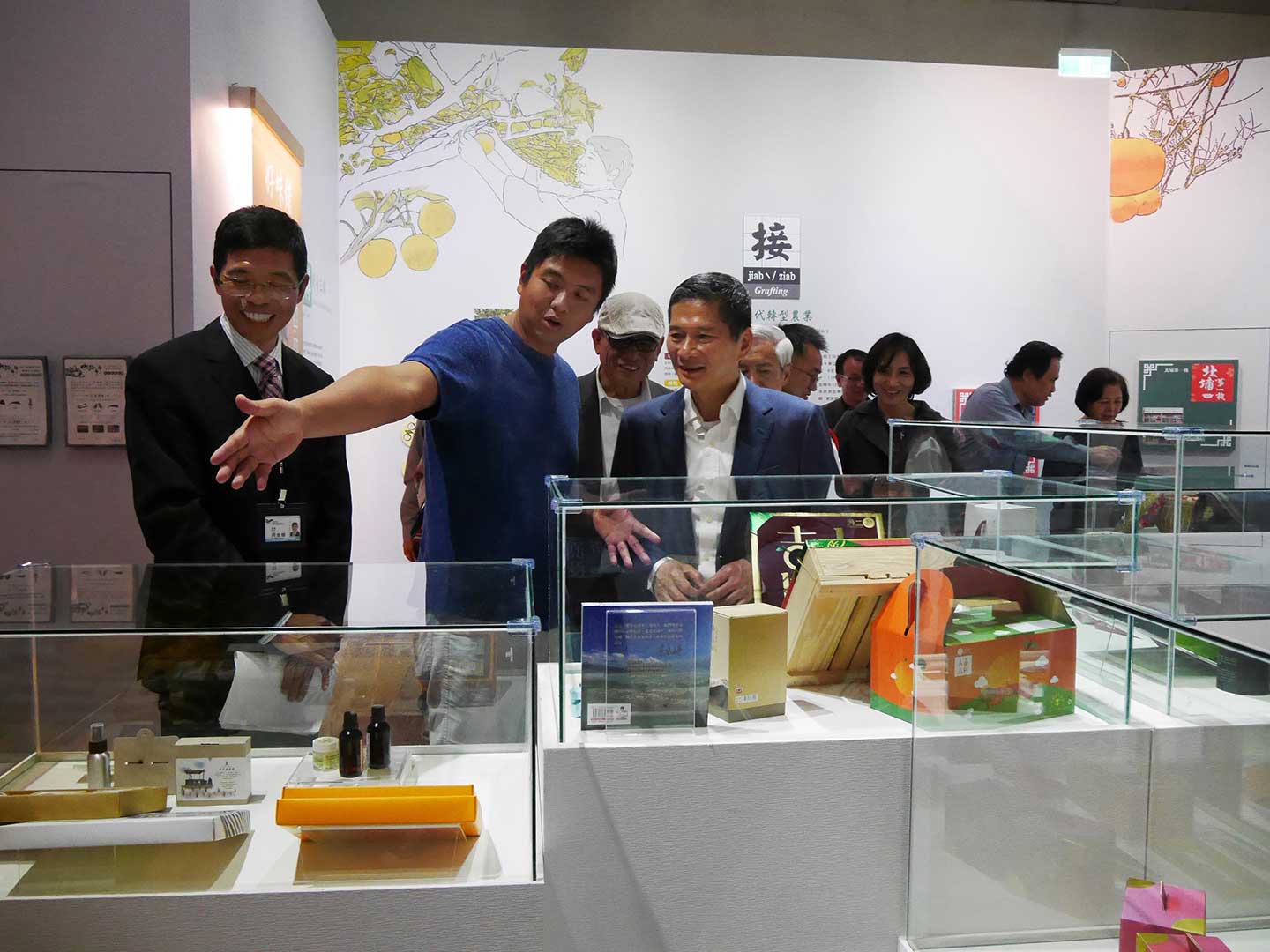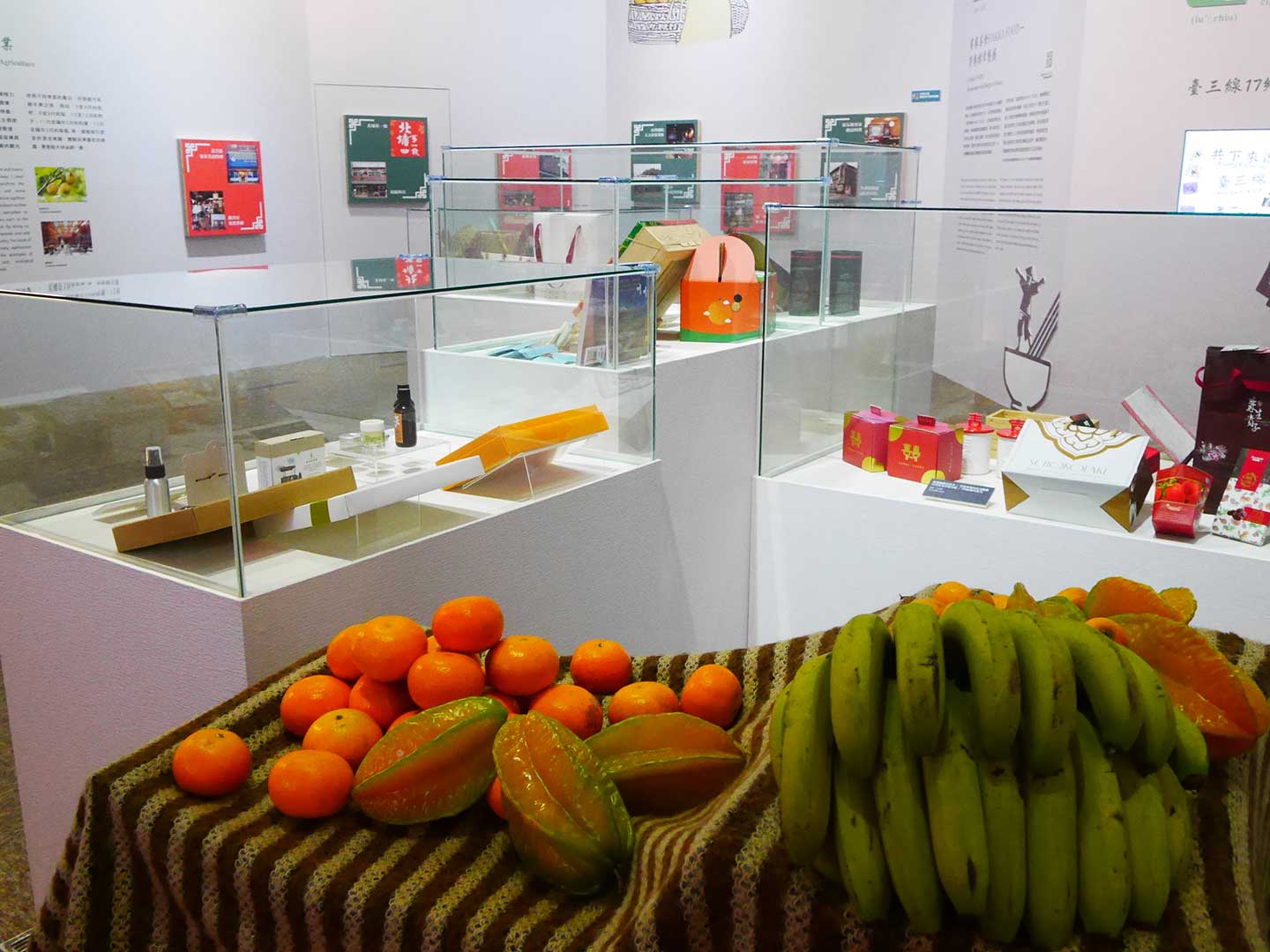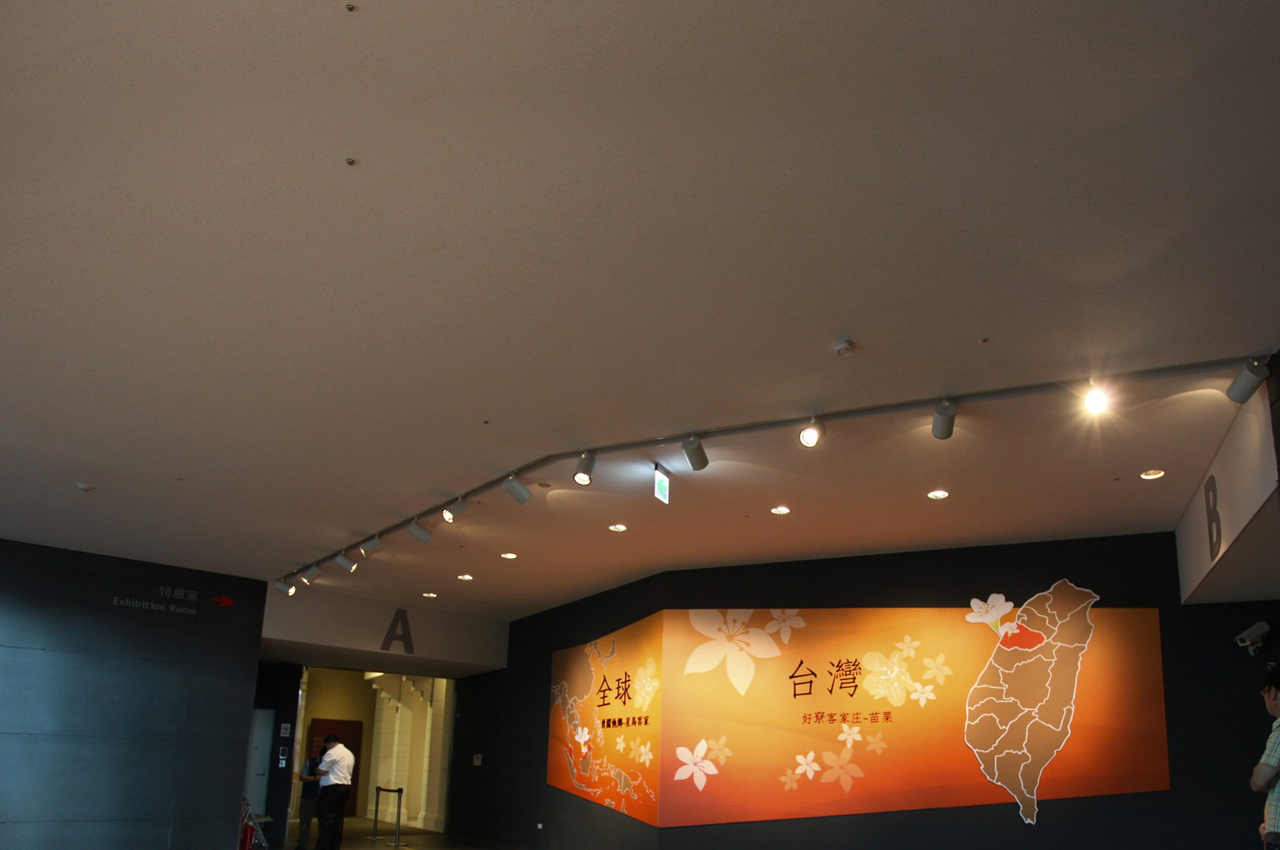Exhibition Review
1st Special Exhibition Hall - Curvy Mountain Road "Exhibition Features Hakka Forestry Industry Culture Meandering AroundThe Trails of Mountainous Region"
Exhibition time: March 22, 2019 to February 10, 2020
Venue: 1st Special Exhibition Hall, Taiwan Hakka Museum
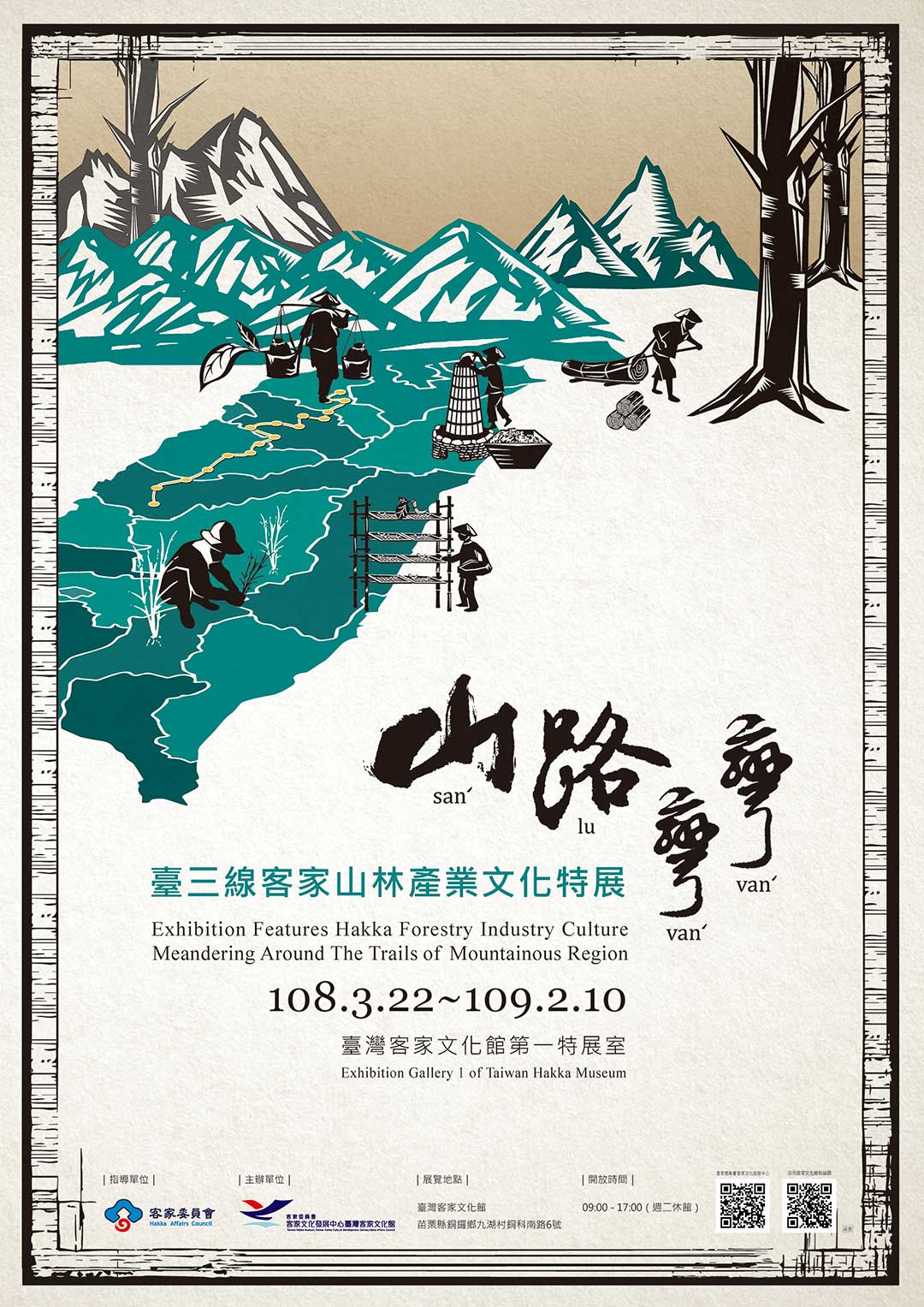
Unit A:
Introduction
Rich in history, culture, and commercial industries, Taiwan's Provincial Highway 3 is also known as the Hakka Romantic Highway and the Hakka Road. Stretching across the northern and central regions of Taiwan, the inter-county Hakka Road passes through areas with the highest density of Hakka population in the whole of Taiwan. These towns once participated vigorously in the global economy as an important manufacturing hub. In olden times, the mountain forests were full of the scents from camphor and lemongrass production. During the off-season, farmers would rear silkworms. Tea plantations sat among the mountains, the melodies of folk songs drifting amidst the landscape. In front of the fo-fong (Hakka residences), handwoven products were laid out. These are where many Hakka people created memories together; they preserved the wisdom of the Hakka ancestors in living off the land, while also charting new paths into the mountains.
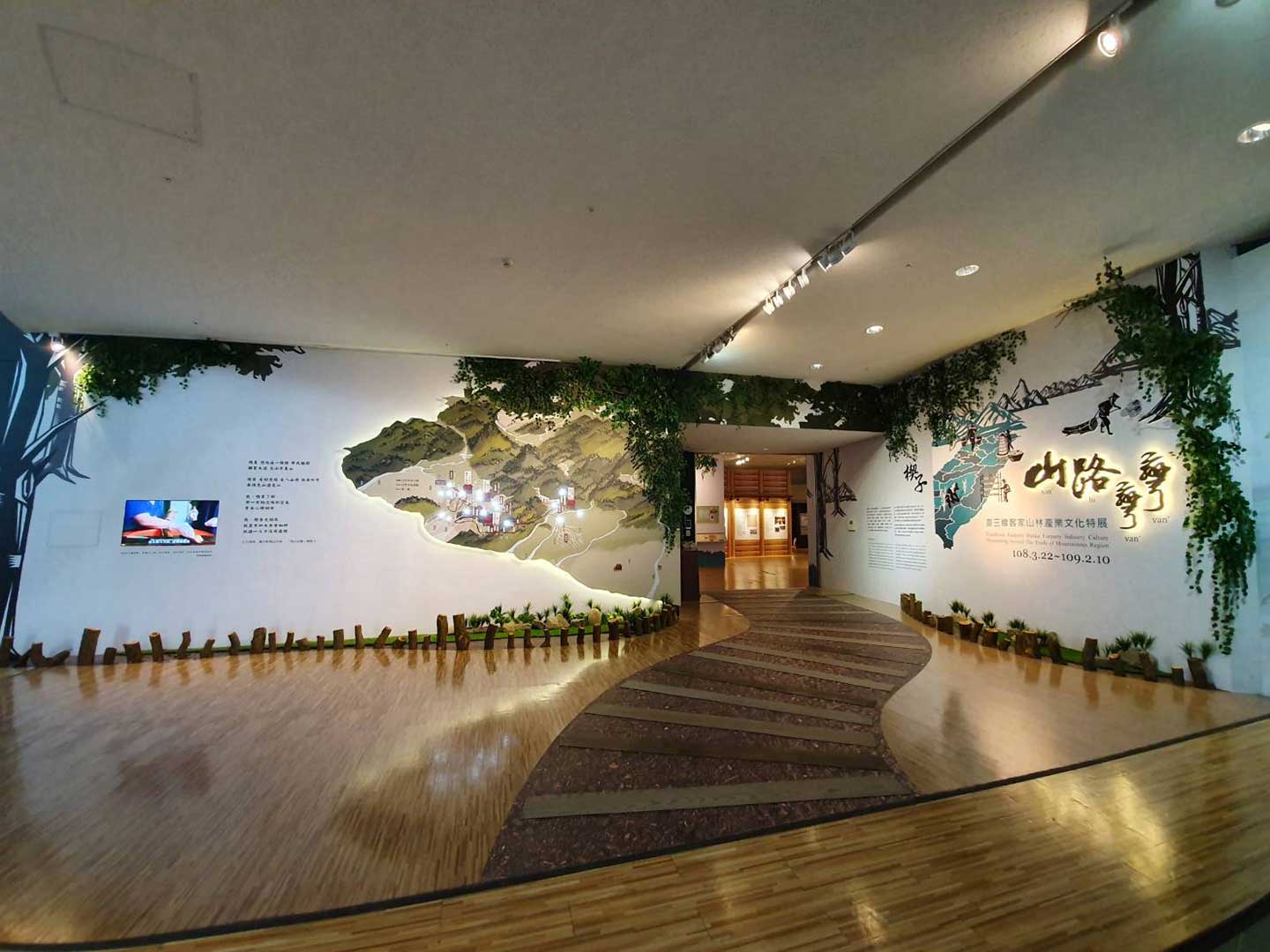
Unit B:
Break through the hardships to develop in the mountains and forests
Mountains, forests and Hakka along the Tai-3rd-road
B-1 Hakka People on Every Mountain
The growth of the world economy brought about increased cultivation of land around the globe. During the Qing dynasty, the cultivation of new land in Taiwan was carried out by local influential figures who recruited labor and amassed funds to do the work, and at the same time built up military might to resist the other forces around. Most of these early land reclaimers who ventured into the foothills were Hakka. After they settled down in these mountains, every village and every fo-fong was like a global factory: doing woodcutting, processing camphor, planting tea, planting mulberry, and rearing silkworms, morphing continuously to meet the demands of the world economy.
B-2 The Pioneers of Land Reclamation
During the process of land reclamation, the Hakka people interacted with different ethnic groups in various ways. In the early days, the Han Chinese people and the Taiwanese Plains Indigenous Peoples (the Pingpu peoples) worked together to cultivate new lands in the settlement area to the north of the Touqian River, and the Zug-qiam clan of the Pingpu peoples initiated the Hakka people into the work. However, to the south of the Touqian River, conflicts between the indigenous people and the Han Chinese people were relatively severe, up until the time Chiang Hsiu-luan and Huang Nan-chiu were in charge of the settlement work.
Local religious beliefs also differed depending on the circumstances of settlement work and inter-ethnic relationships. In the regions where the Hakka people and Pingpu people worked together to build settlements, the predominant faith was the worship of Three Great Emperor-Officials, which stemmed from a sense of reverence towards nature. But in areas that saw more conflict, the people generally worshiped Guanyin, the Bodhisattva of Mercy, and Guan Yu, the Taoist God of War.
B-3 From Villages to Towns
Resources produced in the mountains had to be transported to the plains for distribution and trading. Thus, river terraces saw the birth of streets and towns, such as Daxi Township in Taoyuan, Beipu Township in Hsinchu, Dahu and Nanzhuang Townships in Miaoli, Dongshi Township in Taichung, etc. Many professions developed in these towns, and these vocations were closely tied to the towns’ local industries. The strongholds, religious centers, and administrative centers of the Han Chinese settlers were also located in these towns.
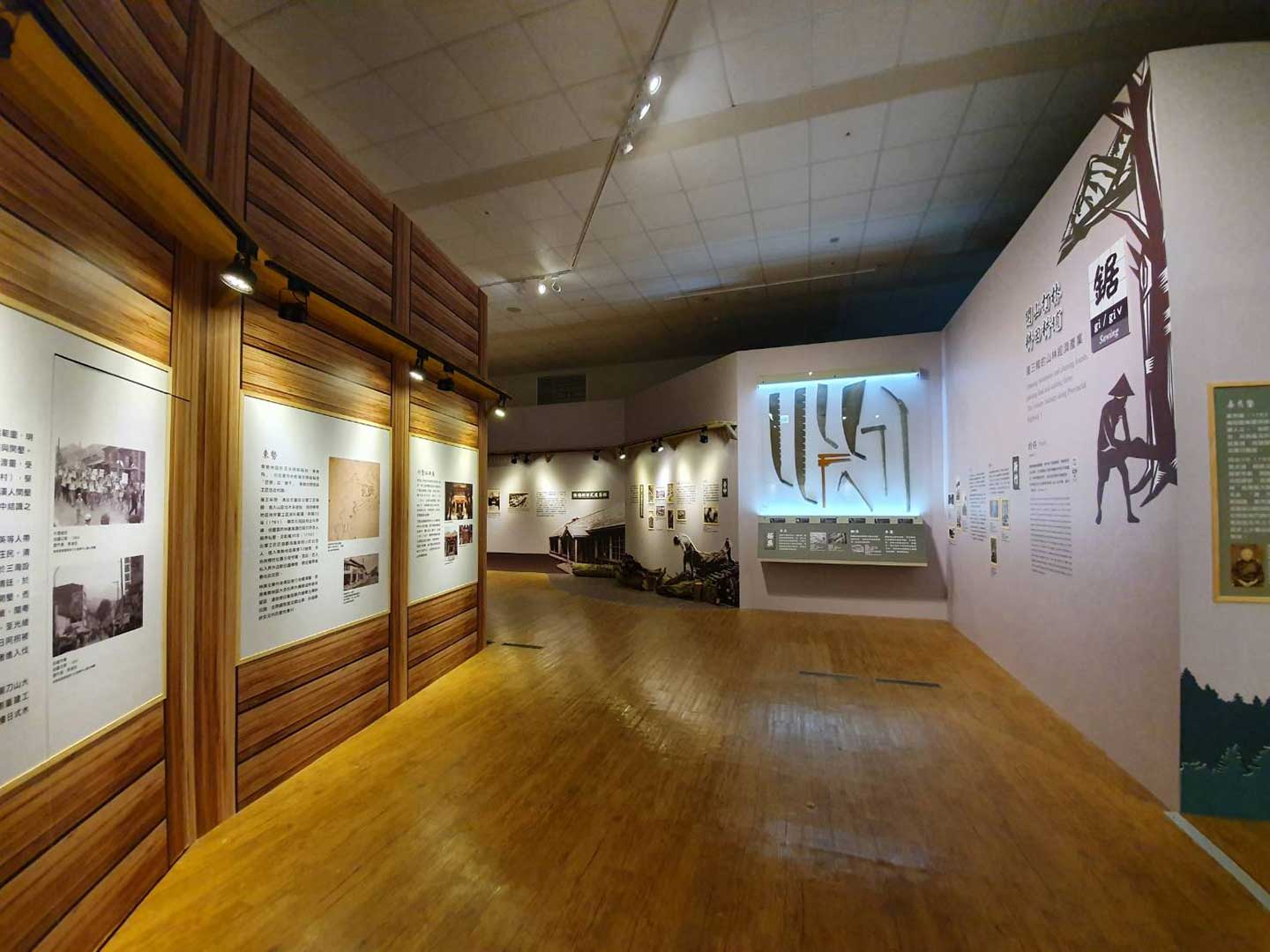
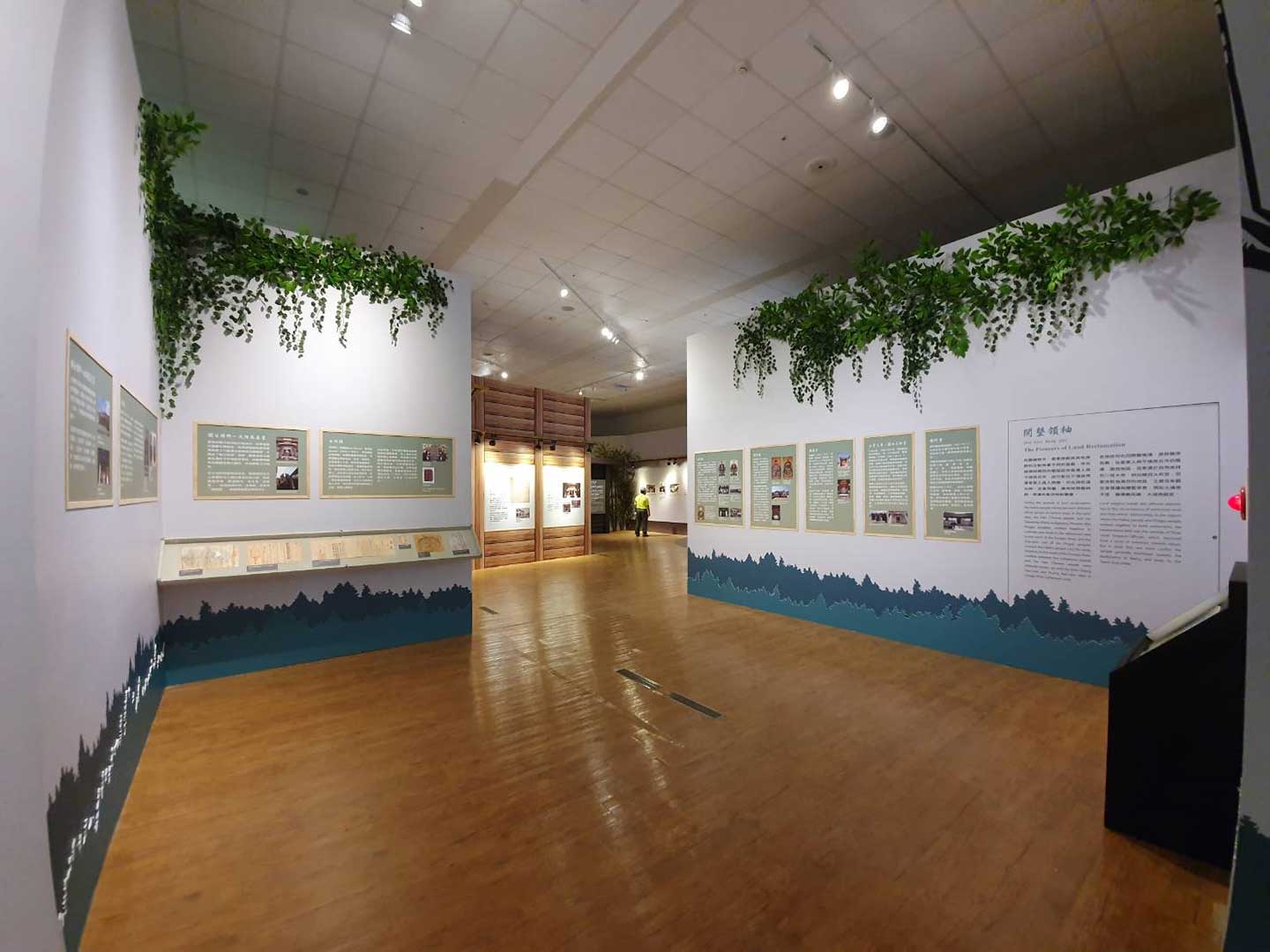
Unit C:
Opening mountains and clearing forests, planting land
and starting farms
The Forestry Industry along Provincial Highway 3
C-1-1 Planks
Taiwan is rich in forestry resources. In the Qing dynasty, camphor trees growing on the mountains began to be cut down to build warships. During the period of Japanese rule, forests were declared to be government property to allow the authorities to take charge of the production of camphor and coal, as well as the export of building materials. However, at the same time that the Japanese government conducted logging operations, they also encouraged reforestation. Many Hakka people who lived close to the mountains became part of the logging industry, and they were known as zo-liau-e. The logging industry continued to thrive after the World War II, building upon the foundations laid down during Japanese rule. It was not until the 1980s that logging operations came to a halt, and forest conservation took center stage. The focus of the forestry industry shifted to one of recreation and tourism.
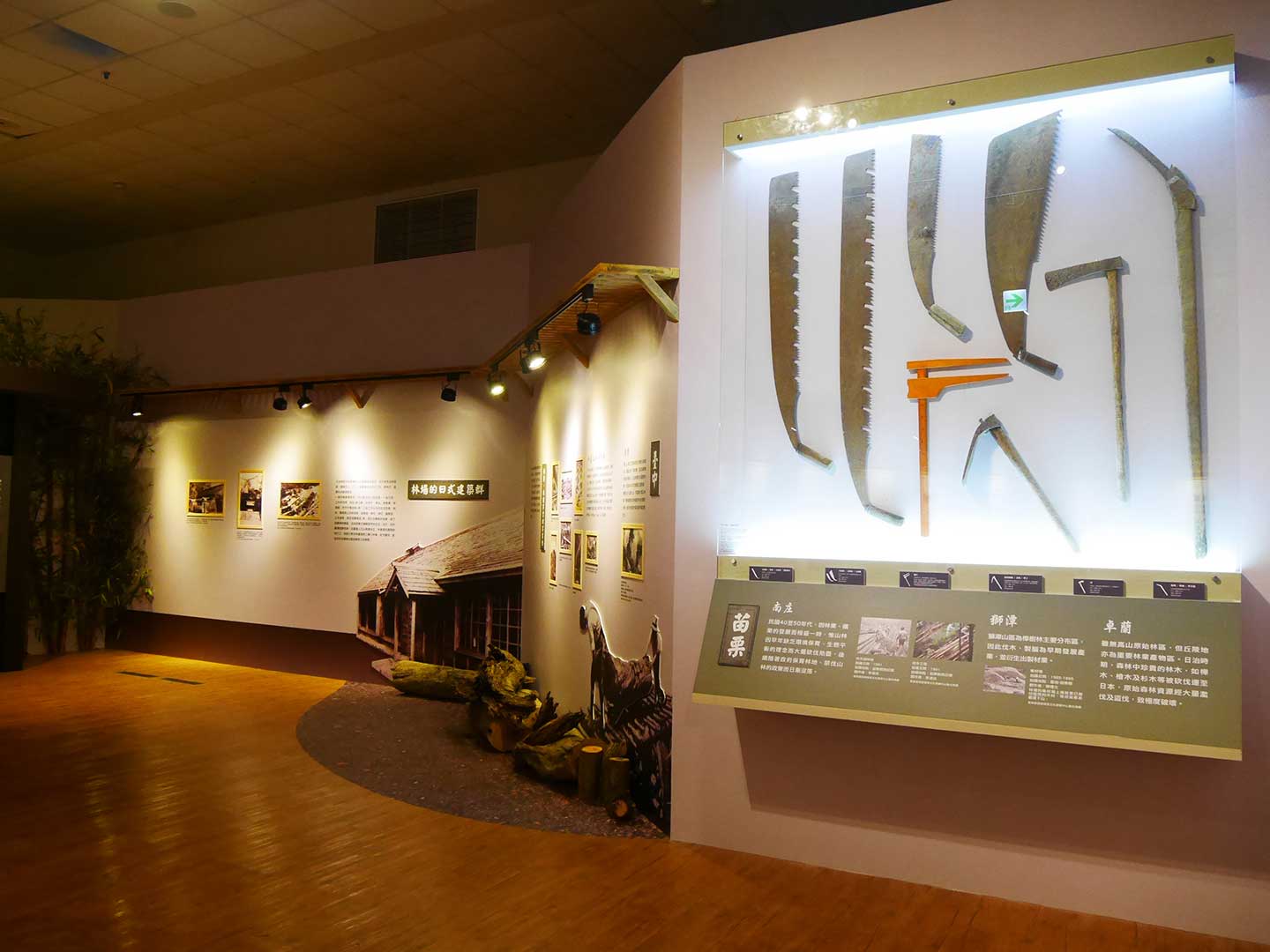
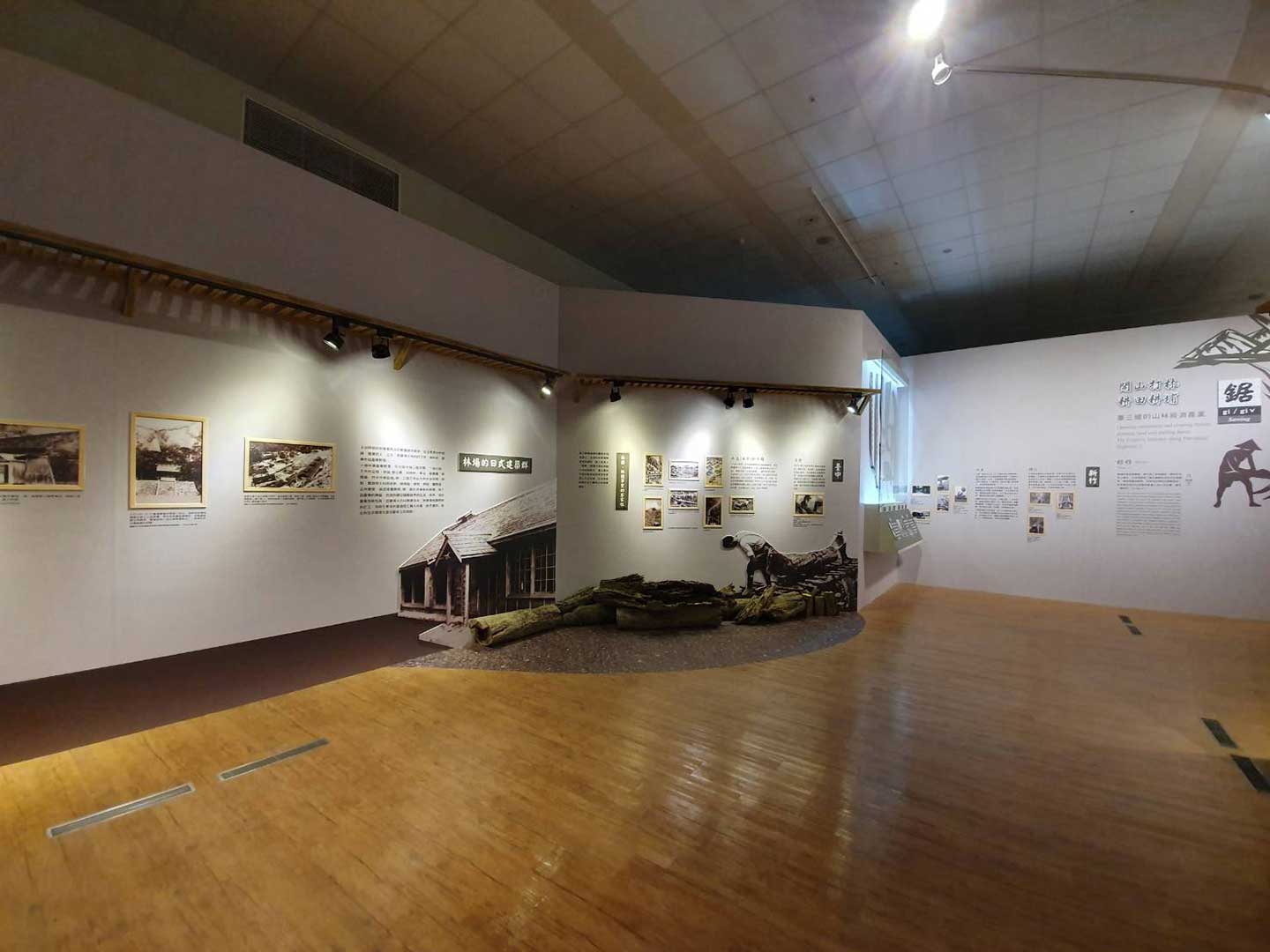
C-1-2 Bamboo strips
The Hakka people had transport routes (called lo-lu in Hakka) that they used to move goods, such as agricultural produce, between the forests of the mountains and the distribution centers on the river terraces. And it was the local weaving techniques that wove together the high mountains and the outside world.
There are two types of weaving. The first is straw weaving, and it is used primarily to make ropes. The second is bamboo weaving, which has a variety of uses; it can be used to make virtually anything, ranging from tea picking baskets, to chicken coops, cradles, seedling baskets, and so on. Even today, one can see elderly residents in Hakka villages weaving in front of their houses. The woven products may be for personal use, or for gifts to family or friends, or even temples. Sometimes, the weavers have to enlist the help of fellow villagers to make something together. So bamboo weaving is not just a practical life skill, it is also the glue that holds a community together.
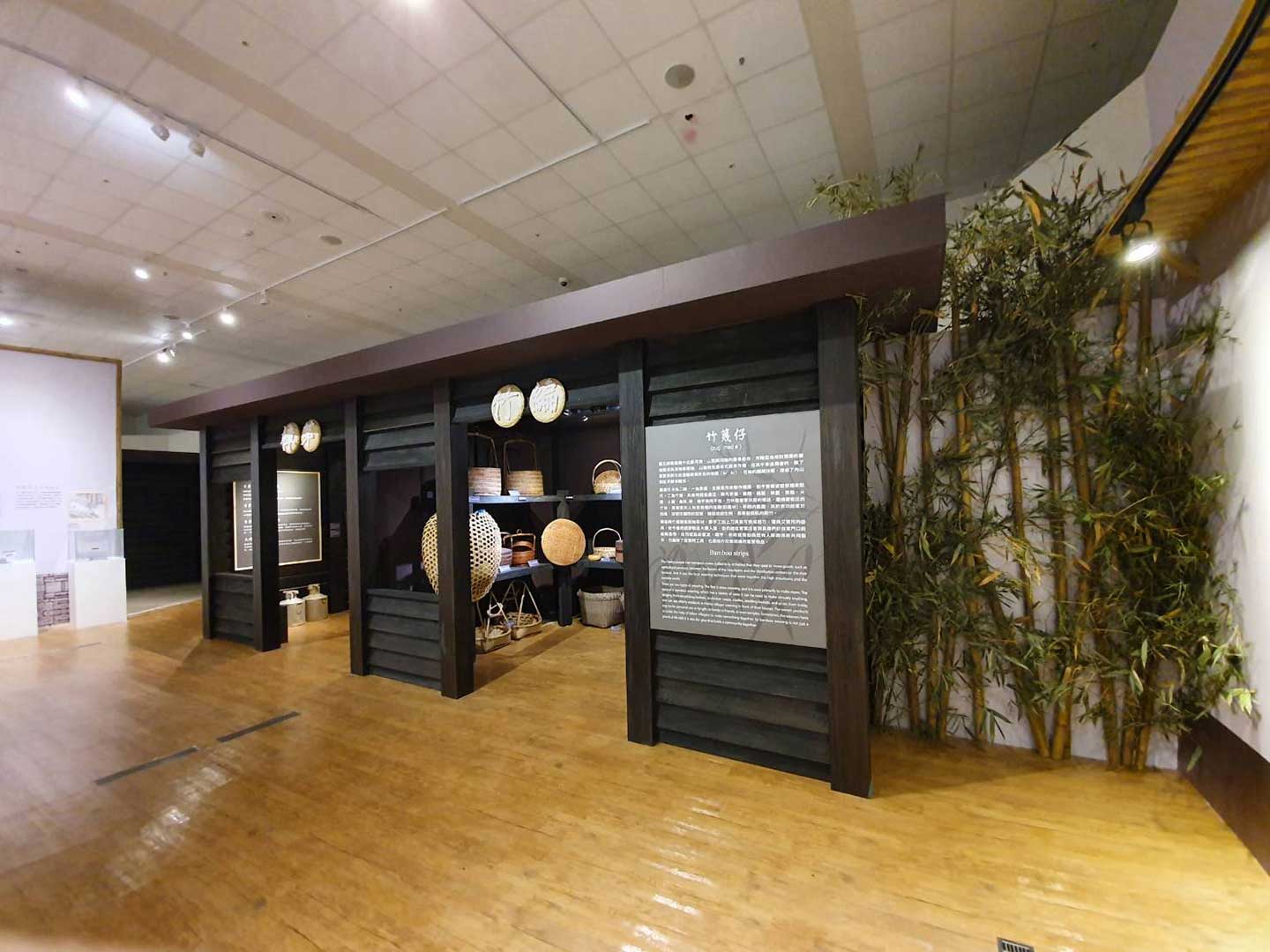
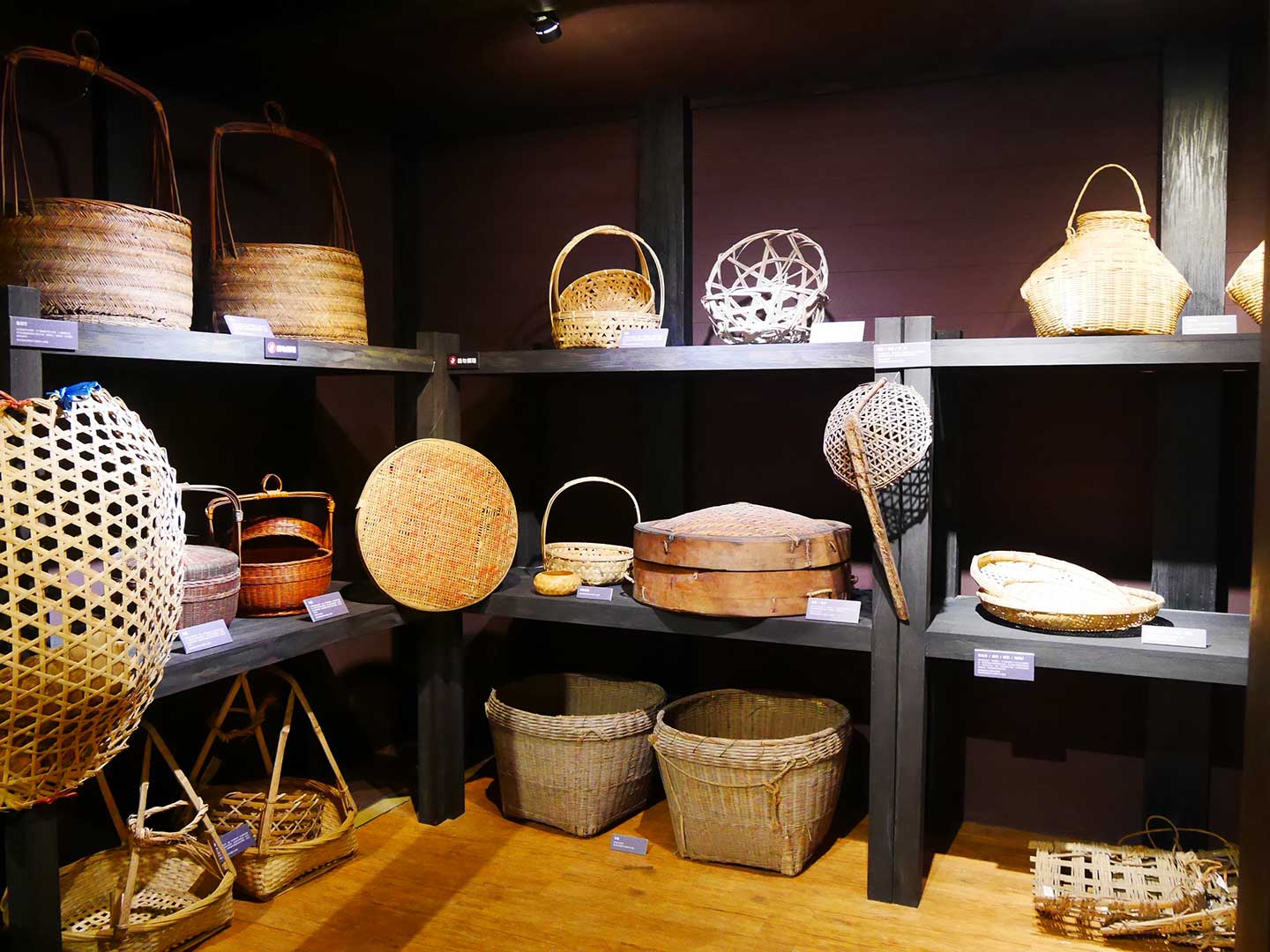
C-2-1 Camphor
A prized natural resource in Taiwan's forests is camphor. It was a key ingredient in the production of smokeless gunpowder, which brought about a revolution in both the history of firearms and the way wars are fought. In addition, camphor was also the basic ingredient used to make cellulose nitrate, the first synthetic plastic in history. The increasing demand for cellulose nitrate brought about the growing importance of camphor, and camphor became a strategic resource as well as an important trading commodity.
Records of exports of camphor from Taiwan date back to the end of the Ming dynasty and the beginning of the Qing dynasty, and the industry grew after ports were built during the Qing dynasty. This continued until the period of Japanese rule, when the island’s camphor industry still accounted for 70% of the world’s total camphor production, making Taiwan the top producer of camphor in the world. Today, Miaoli County is the greatest producer of camphor in Taiwan. Taiwan has indeed earned the title of the “Camphor Kingdom”. However, the emergence of synthetic camphor and the outbreak of the Pacific War led to the decline of Taiwan's camphor industry.
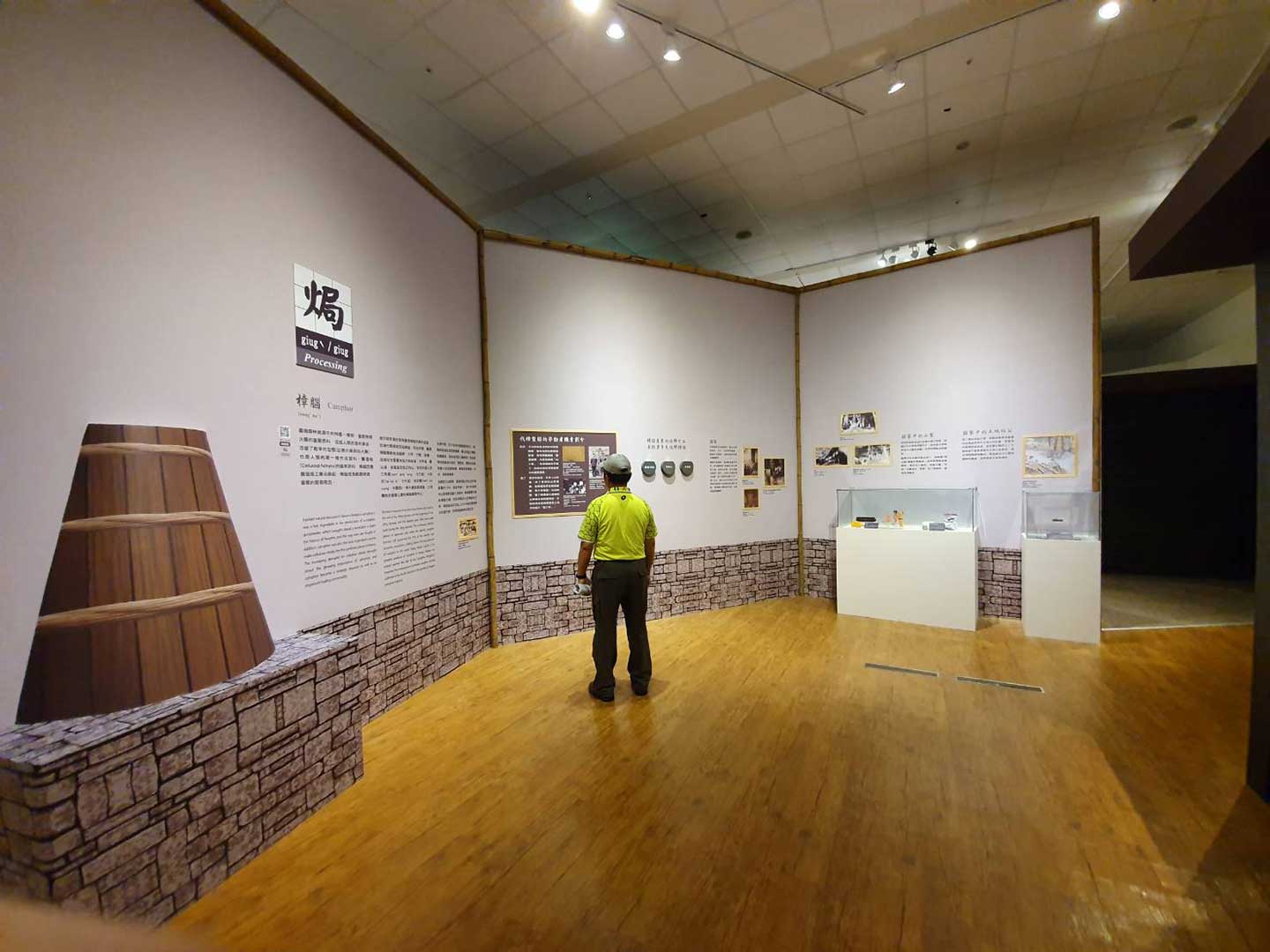
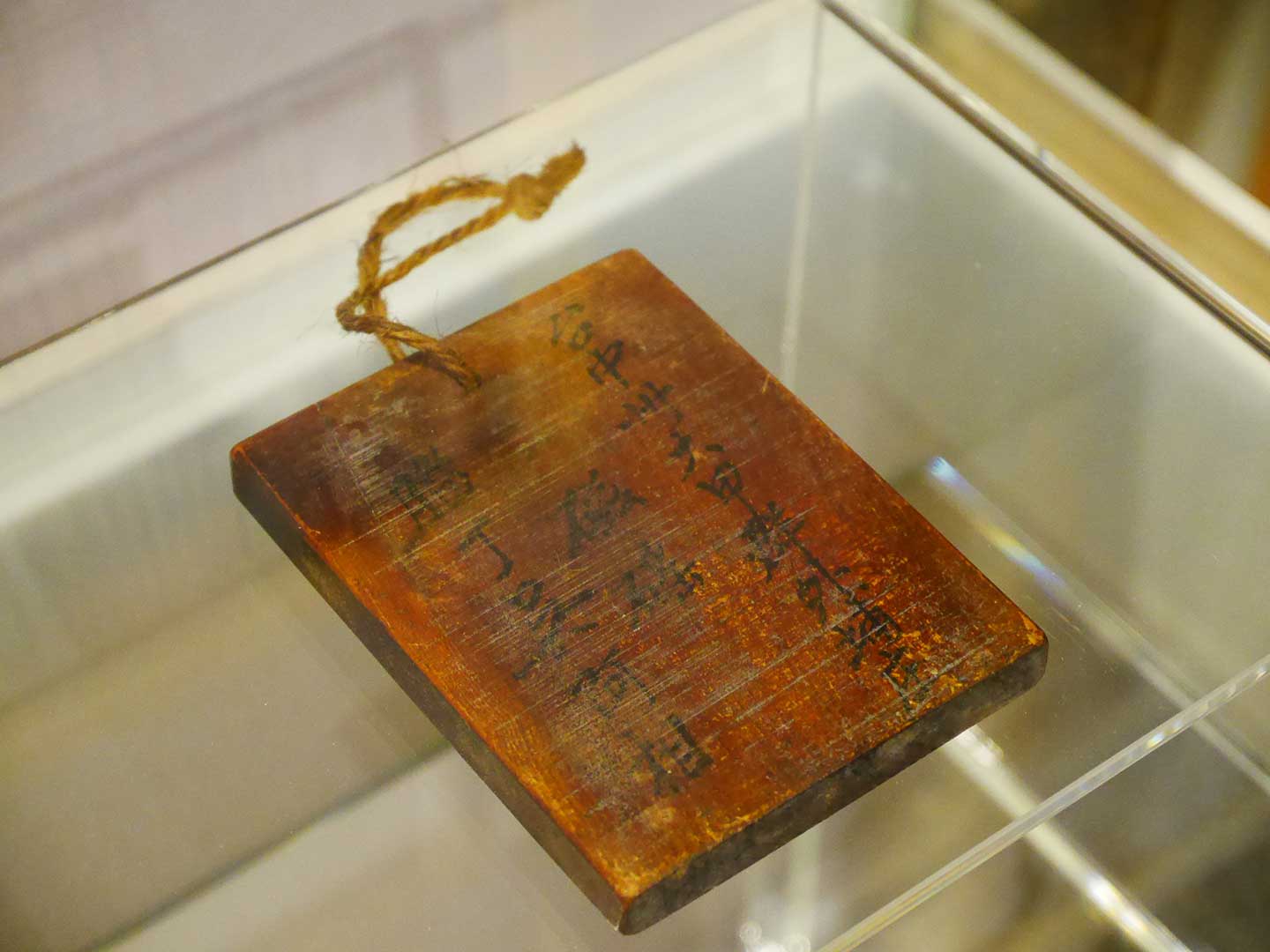
C-2-2 Lemongrass
The distillation techniques and apparatus used to process camphor could also be directly used to extract the essence of lemongrass. Furthermore, lemongrass can be grown in places that once grew camphor. Hence, when the camphor industry took off during the period of Japanese rule, it led to the simultaneous growth of the lemongrass industry, which took hold in Miaoli.
The scale of lemongrass cultivation reached an all-time high after the War, when almost every family grew their own lemongrass. The total area of these lemongrass farms exceeded 1,000 hectares. In 1947, exports of lemongrass oil produced in Taiwan accounted for more than 70% of the global market. Miaoli was the biggest producer in Taiwan, within which Dahu Township continually held the crown for both total lemongrass planting area and for total lemongrass production.
In 1961, the lemongrass oil industry was hit by the development of chemical alternatives, which gradually replaced the traditional oil. By the 1980s, the business of lemongrass distillation had faded out of existence.
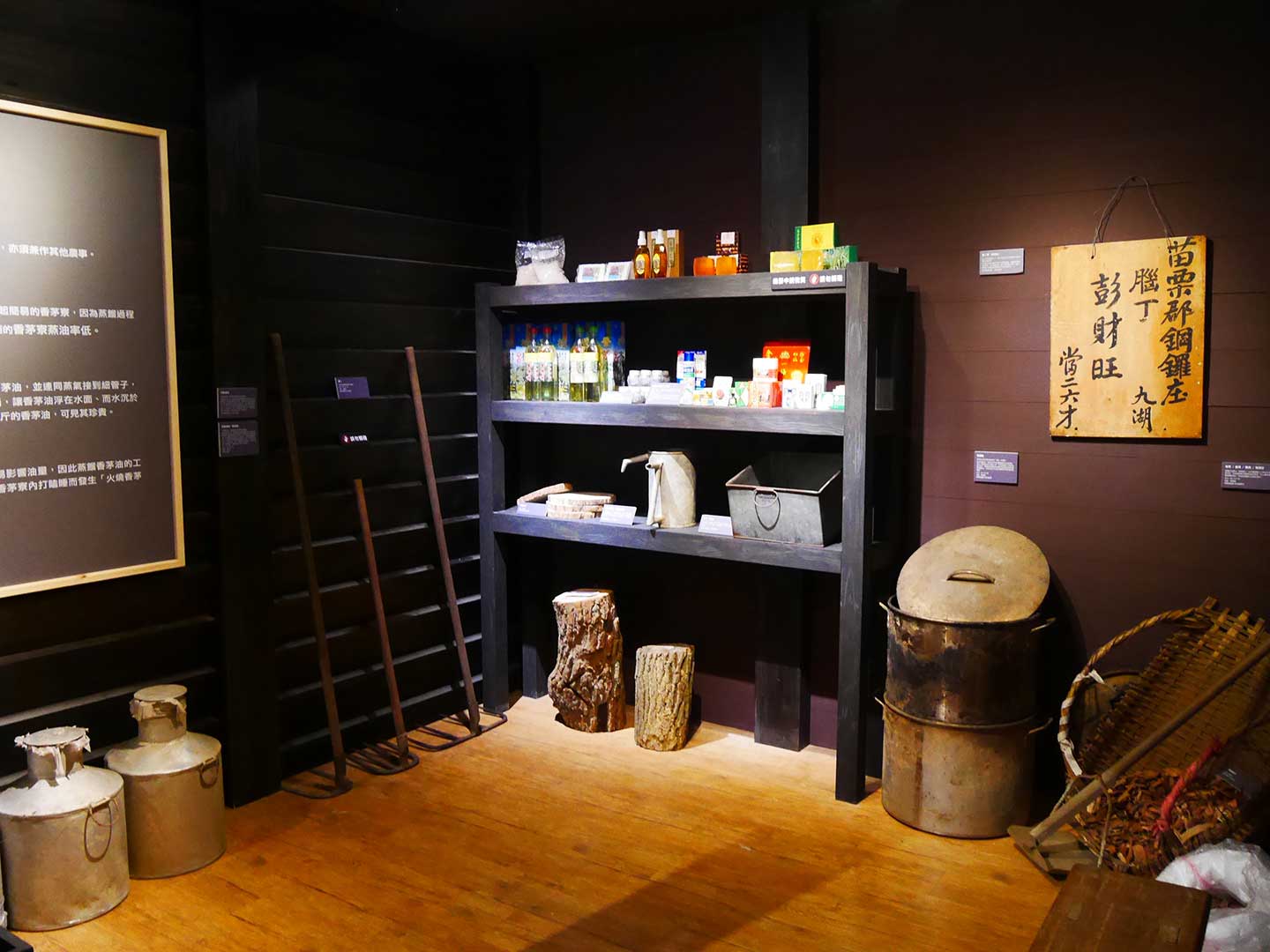
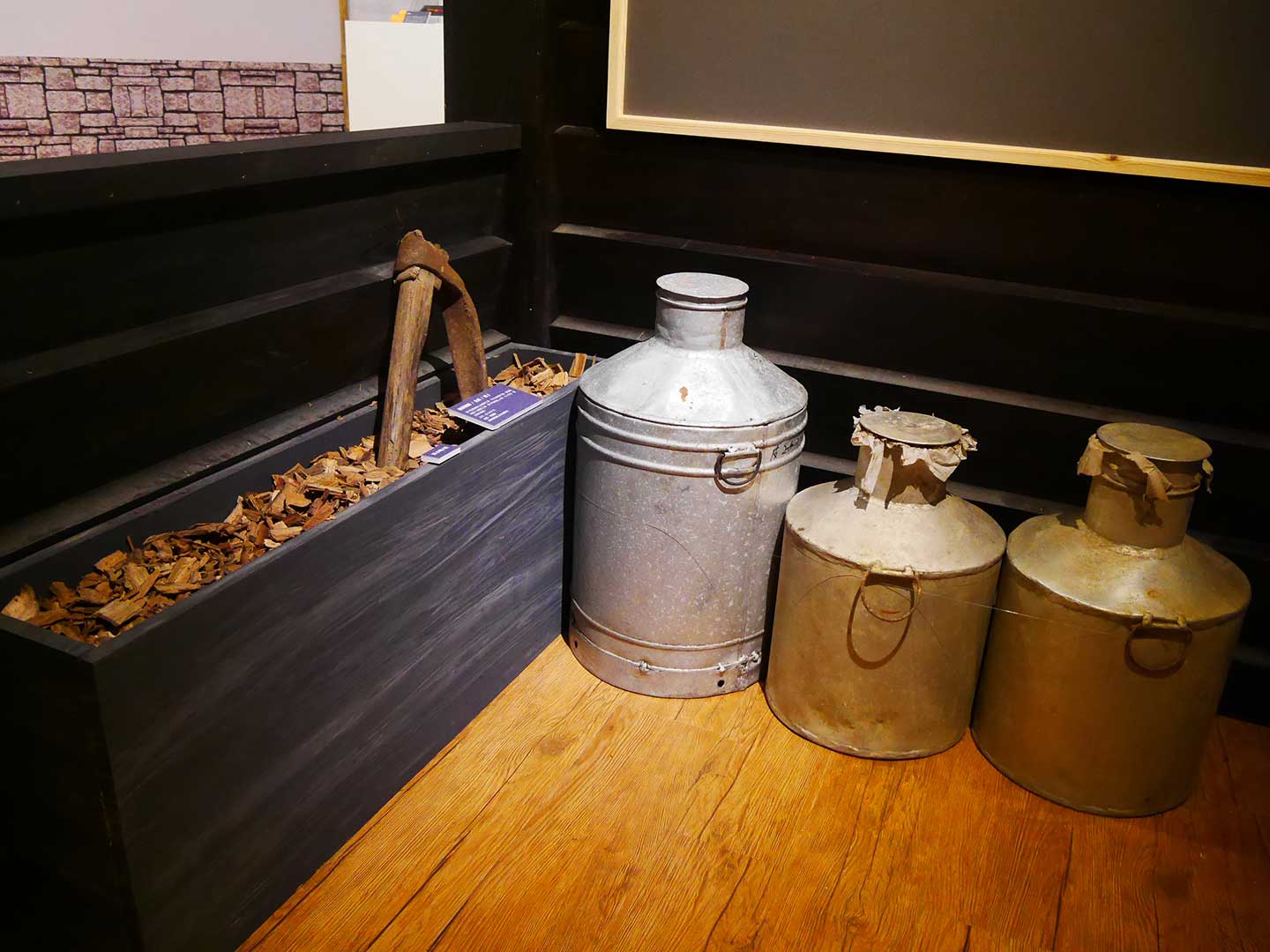
C-3-1 Mountain Tea
During the reigns of the Jiaqing Emperor and the Daoguang Emperor in the Qing dynasty, the Hakka people living among the hills of Taiwan brought in tea planting and tea processing techniques from Kien-san-bo, Taipei (today's Wenshan District). These early settlers also filled the air in tea plantations with beautiful Hakka folk songs as they worked.
During the period of Japanese rule, the Japanese government encouraged tea farmers to step up production of tea leaves. Consequently, black tea became one of the main exports of Taiwan. From the end of the second world war to the 1980s, exports of Taiwanese tea leaves reached more than 60 countries around the world. The bulk of the exported tea leaves came from areas populated by Hakka people, such as Taoyuan (Longtan and Yangmei), Hsinchu (Guanxi, Hukou, Beipu, and Emei), and Miaoli (Touwu, Toufen, and Sanwan).
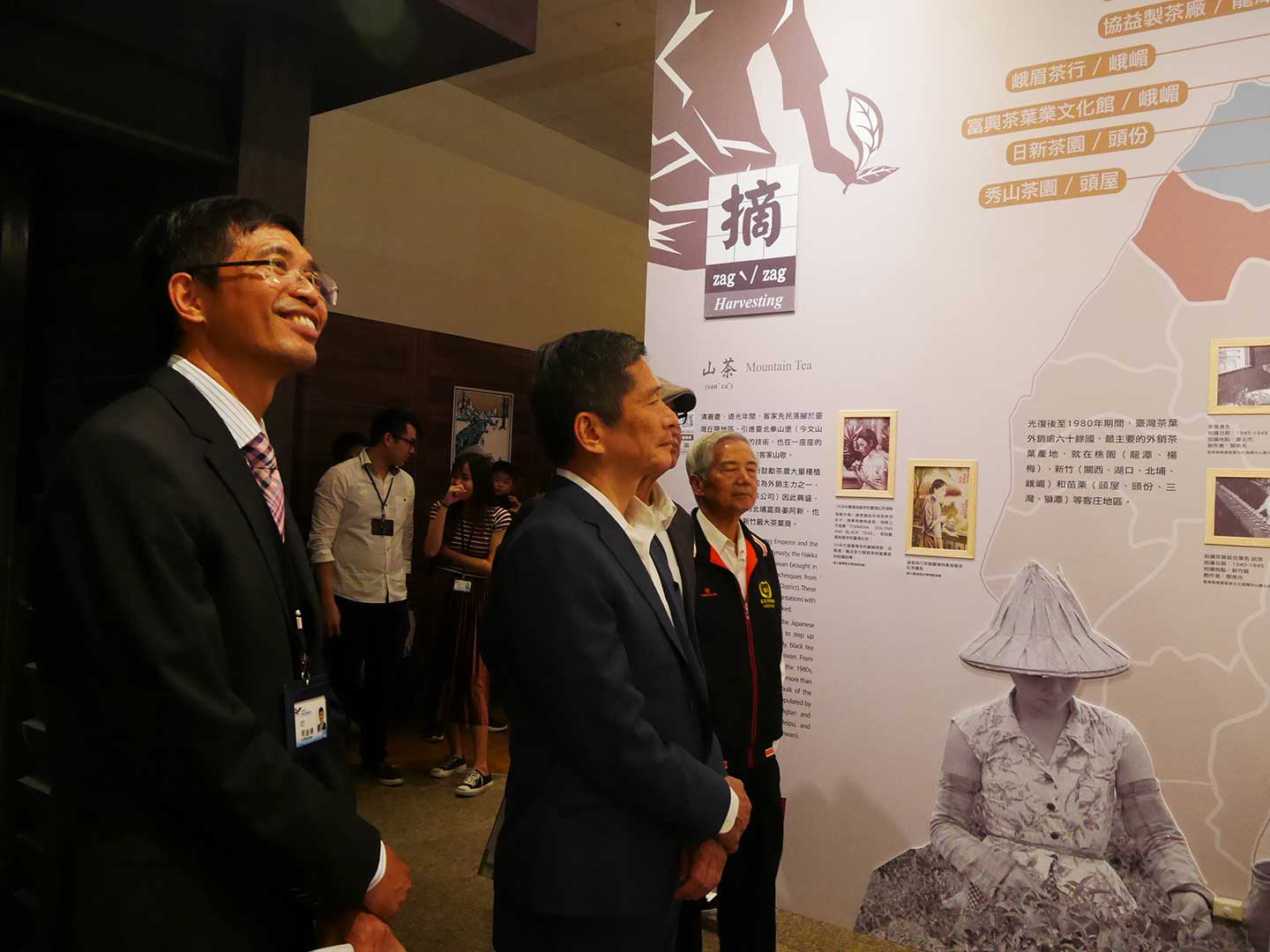
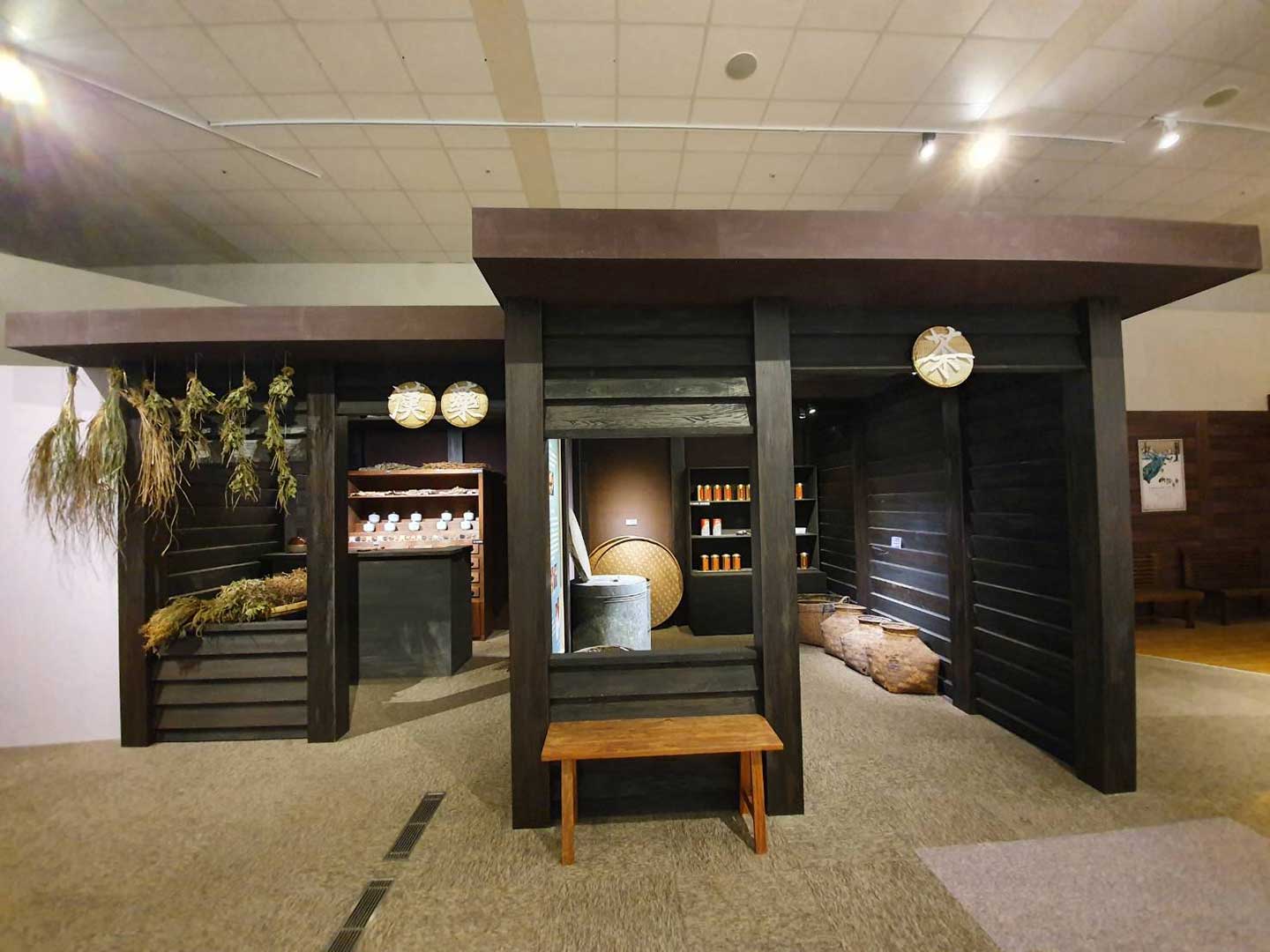
C-3-2 Mulberry Leaves
In 1890, the Qing government set up a Department of Silk in Taiwan and encouraged country squires to plant mulberry trees and rear silkworms. The department was later closed down when the Japanese took over the rule of Taiwan. During the Japanese rule, the Sericulture Institute under the Governor-General's Office introduced a series of initiatives, such as experiments and trials on silk production, promotion of silkworm rearing in the mountainous areas, rewards for outstanding silk producers, etc. These gradually laid down a strong foundation for Taiwan's sericulture industry.
In the initial years after the War, the Taiwanese government took control of sericulture agencies; the main development areas were concentrated in Hsinchu and Miaoli. The 1980s saw the peak of Taiwan’s sericulture industry, with the industry supported by the export of unprocessed silkworm cocoons to Japan. However, Japan later imposed restrictions on these exports. These restrictions, combined with competition from Brazil and Mainland China, led to the decline of Taiwan’s sericulture industry until it slowly ceased production in the 1990s.
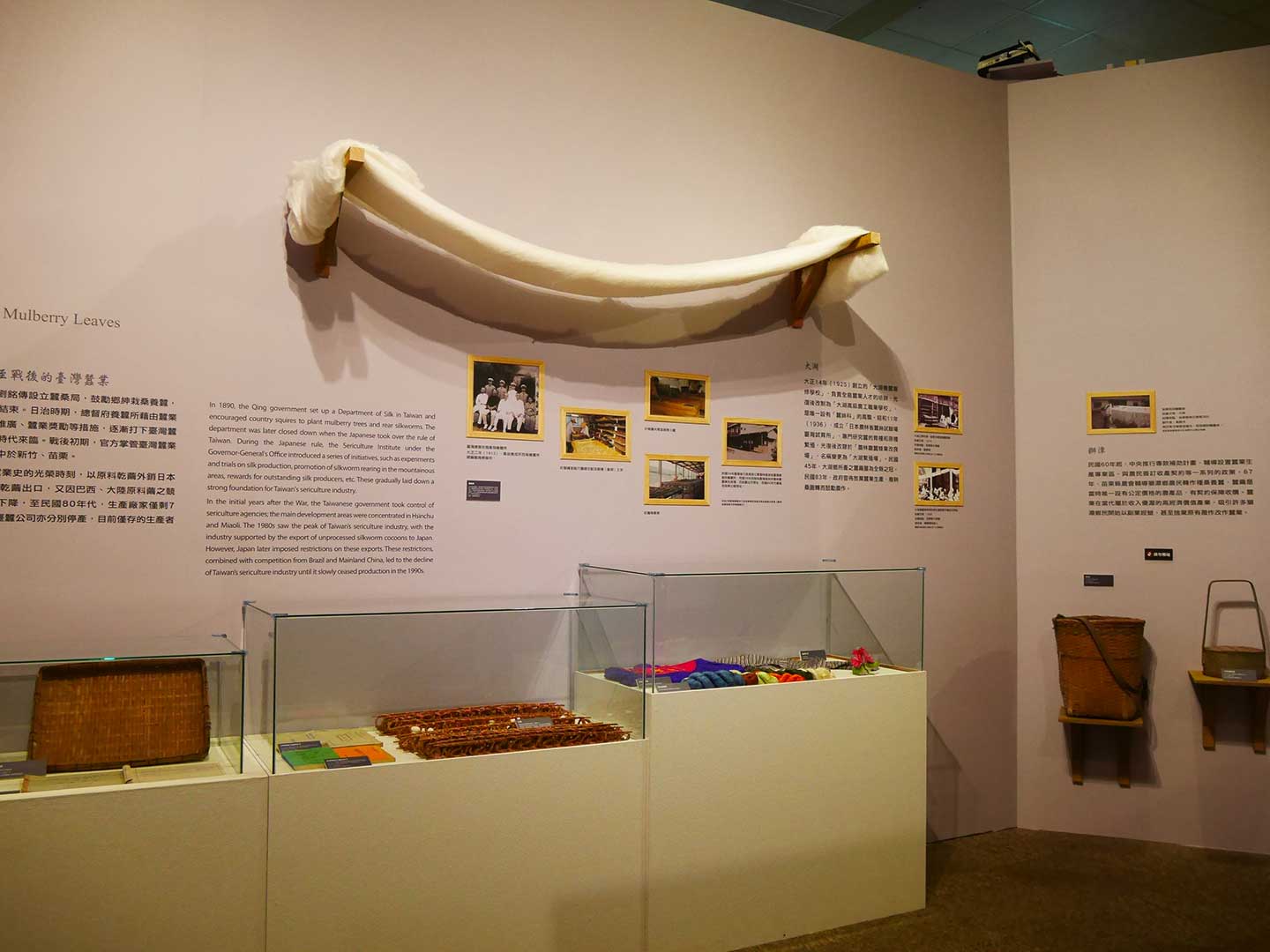
C-4 Tung Trees
During the Japanese period, oil from wutong tree seeds was needed for war purposes. However, the wrong species was imported by mistake, and that species is the Tung tree that we see in Taiwan today. The Tung tree is a highly invasive species. Eventually, it became the dominant tree species in the mountains and forests of northern Taiwan. Tung wood hence became a cash crop for the Hakka people, and they used it for manufacturing furniture, wooden clogs, and matchsticks. This continued all the way until these industries were supplanted by competitors.
Since 2003, the Hakka Tung Blossom Festival has become very successful, centered on the motif of Tung tree flowers. The festival seeks to cultivate culture, boost industry, improve tourism, and inject new life into the Hakka villages. Today, the flower of the Tung tree has become a wonderful symbol of Hakka culture.
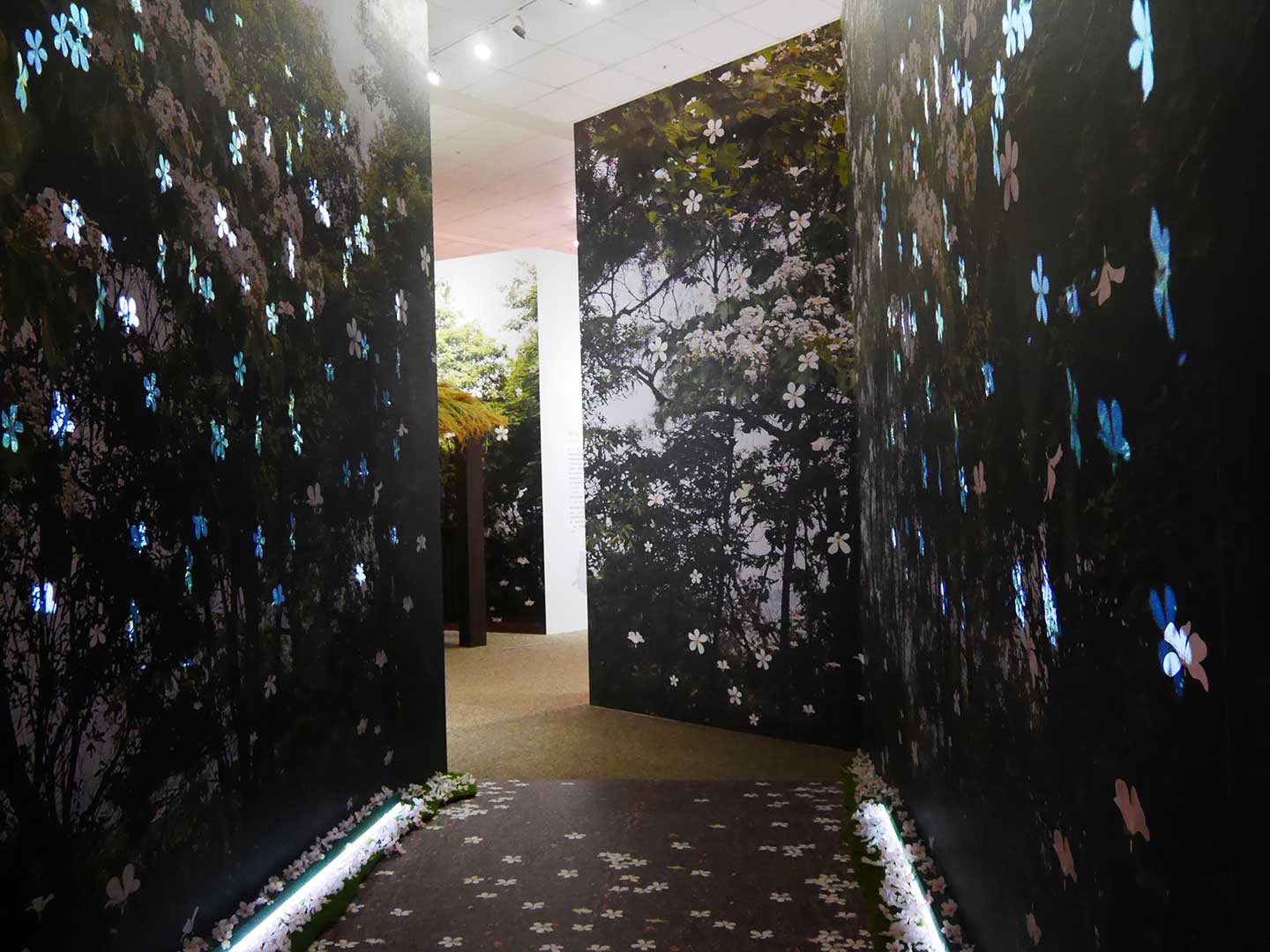
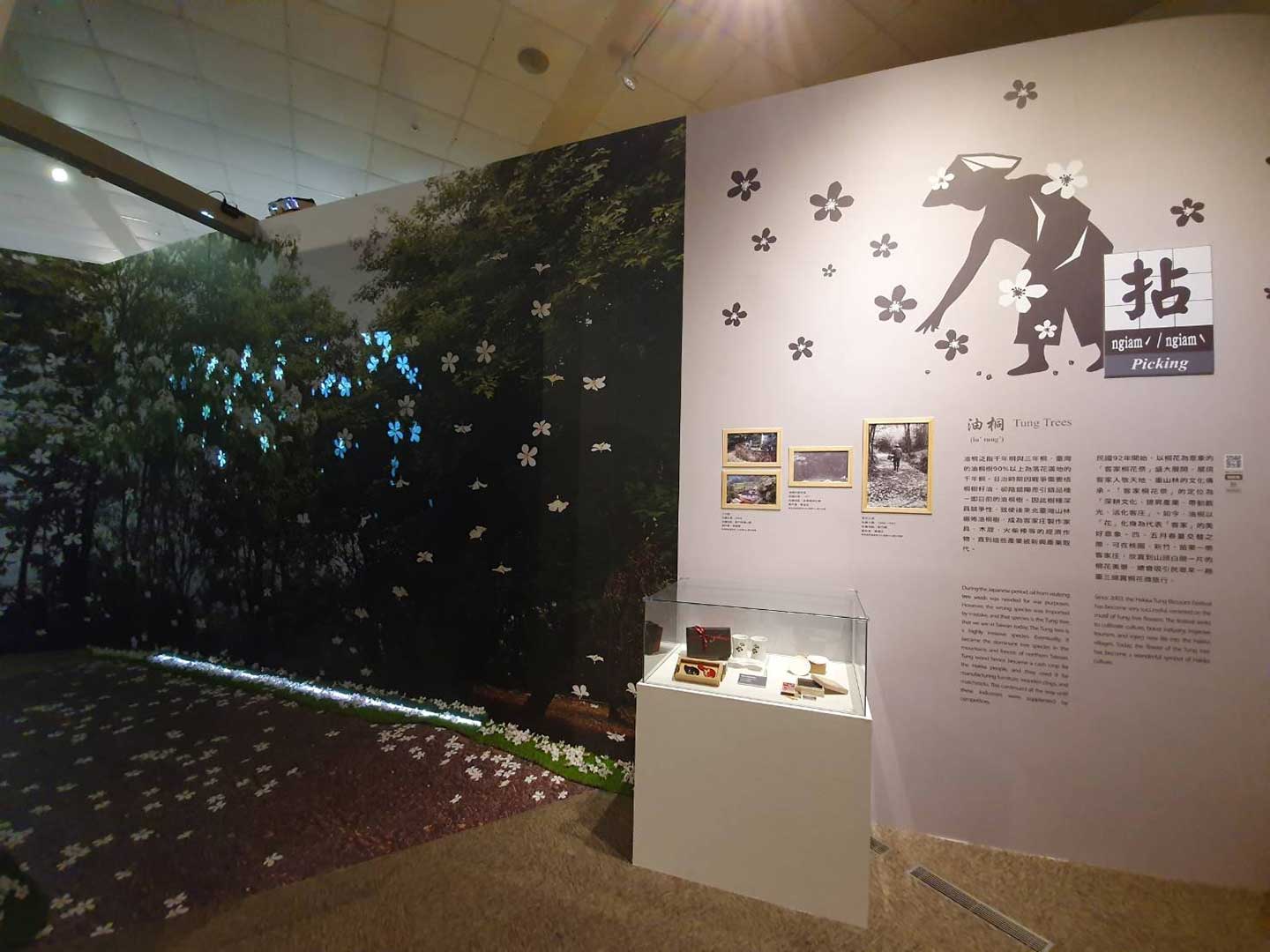
Unit D:
Twists and Turns
The Meandering and Historical Provincial Highway 3
Be it for land reclamation work in the mountains, interactions and inter-marriages between the villages, or the transport of goods to river terraces for distribution and sale, all the old roads have been trodden by the Hakka people countless times. Camphor, tea leaves, coal, rag paper, and sweet potatoes are some of the goods that may have been transported along these historical pathways. Some of these routes were even used for marching during wartime. As years went by, the roads that were more frequently used were modernized through expansion and paving. The roads that were less frequently used, on the other hand, were turned into walkways for recreation and getting close to nature, and have even become part of the cultural heritage themselves.
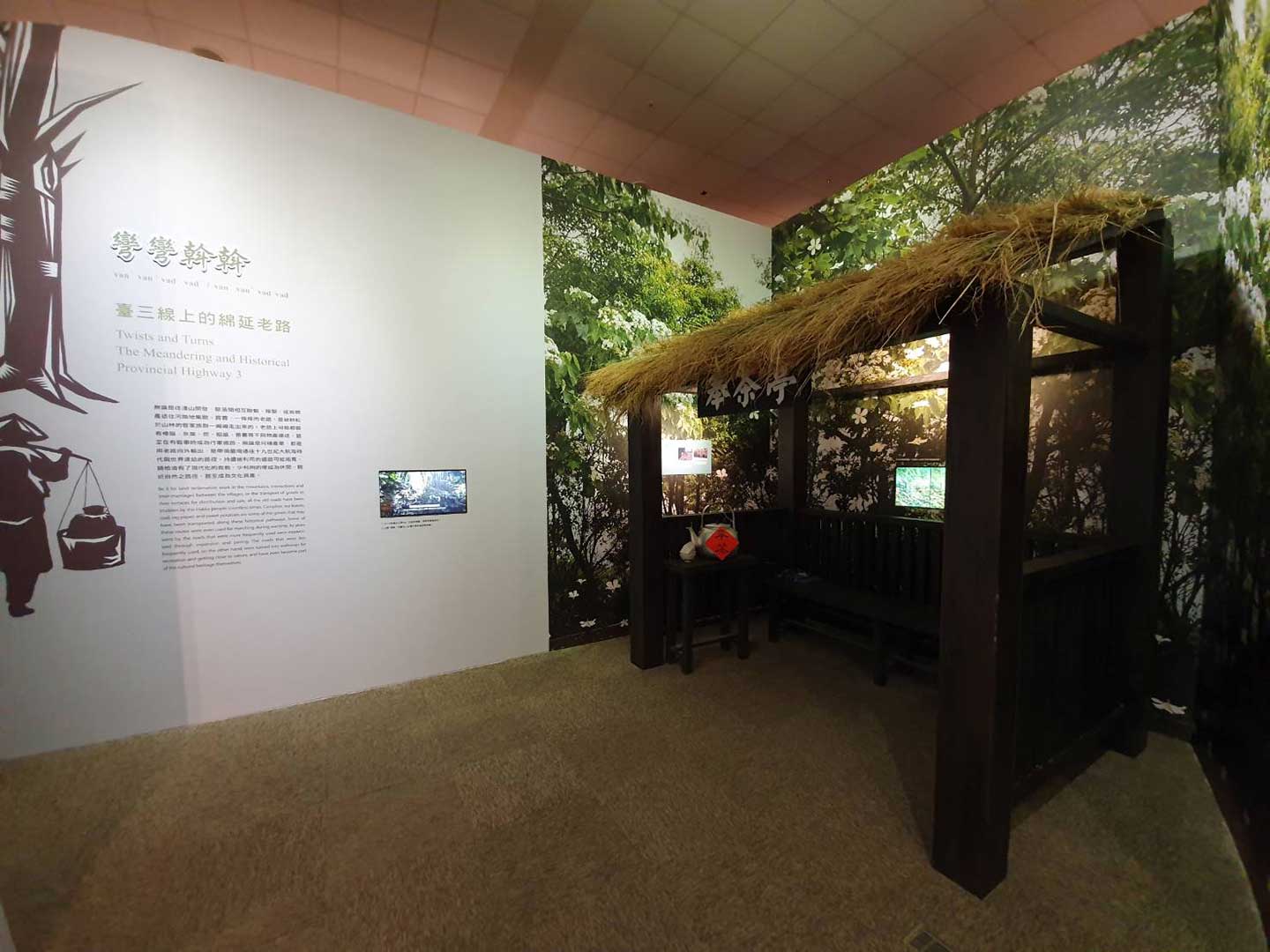
Raknus Selu Trail
The Hakka Affairs Council spent more than a year to learn more about these trails through field studies and community interviews, before coming up with a network of nature walkways along the Provincial Highway 3 that brings together nature, history and culture, community memories, multiple ethnic groups and various industries. This Romantic Highway links the old pathways in the mountains, agricultural transport routes, and green motorways. It starts in the north at Sankeng, Longtan District, Taoyuan City, and goes southward, ending in Dongshi Township in Taichung City. The main road is 249km long (61% of its total length) and its subsidiary roads total 158km (39% of the total length), giving a total length of 407km.
This network of roads is named the Raknus Selu Trail, which comes from a combination of words from the languages of the Saisiyat, Atayal, and Hakka peoples. Raknus is the word for “camphor” in the Atayal and Saisiyat languages, while Selu means “trail” in the Hakka language.
Unit E:
Rebirth of Innovation, Migration of the Youth
E-1 Tourism along Provincial Highway 3
- Points of Interest along the Provincial Highway 3 across 17 villages, townships, cities, and districts
Daxi District - Lee Teng-fan's Ancient Residence, Daxi Old Street
Longtan District - Shengji Pavilion
Pingzhen District - Bridge at Bogong Pond
Guanxi Township - Dong'an Bridge
Hengshan Township - Hexing Train Station
Zhudong Township - Zhudong Market
Beipu Township - Beipu Old Street
Emei Township - Lion's Head Mountain scenic area
Toufen City - Toufen Backyard Garden
Sanwan Township - Baba Tunnel
Nanzhuang Township - Nanzhuang Old Street
Shitan Township - Wenshui Old Street
Dahu Township - Dahu Farmers Association Farm and Wineland Resort, Miaoli County
Zhuolan Township - Lixiping Recreation and Agriculture Park
Taichung City Shigang District Tuniu Hakka Cultural Hall
Xinshe District - Bailengzun Memorial Park, Dongfeng Bicycle Green Way
- A new look for old industry
Baxianshan National Forest Recreation Area, managed by the Dongshi Forest District Office, under the Forestry Bureau, Council of Agriculture, Executive Yuan
Dongshi Forestry Culture Park, managed by the Forestry Bureau, Council of Agriculture, Executive Yuan
Master A-liang Camphor Workshop
Donghua Camphor Factory
Bao Dao Camphor & Essence Co
Mao Shiang Tan Fang
Miaoli County Lemongrass Cultural Association
National Da-Hu Agricultural & Industrial Vocational High School Silk Learning Lab
Taiwan Silk Industry Culture Center, run by the Miaoli District Agricultural Research and Extension Station, under the Council of Agriculture, Executive Yuan
Quanming Silk Ecological Education Park
Formosa Tea Industry and Culture Gallery
Yi-Ming tea garden
Ri Xin Tea Plantation
Fuxing Tea Culture Center
E-2 Gastronomy along Provincial Highway 3
- HAKKA FOOD - Restaurants with Badges of Honor
Hakka restaurants are important showcases for Hakka cuisine and the unique products of Hakka culture. The Hakka Affairs Council has established the HAKKA FOOD badge of honor in order to promote Hakka culinary culture, and has established a mentoring program to transform Hakka restaurants. During their metamorphosis, the incorporation of installations, decorative items, and wares infuse Hakka elements into the restaurants. Diners visiting these restaurants are welcomed with Hakka greetings and music. Locally produced ingredients are used in Hakka dishes to further improve the cuisine. These restaurants adopt a multi-sensory approach that promises an immersive experience for their guests as they enjoy Hakka Food.
We feature 12 of the outstanding restaurants located along Provincial Highway 3 that have been awarded HAKKA FOOD badges of honor. We hope that Hakka restaurants will not only become advocates of the Hakka culture and the glue binding the Hakka community together, but also help to promote and market both the culture of the Hakka villages and the rich natural resources of these regions. The restaurants will add depth to Hakka culinary culture as they spread and expand the Hakka cultural ecosystem. In the process of having a meal, diners are immersed in both authentic Hakka culture and the deliciousness of the cuisine.
- Grafting - The Modernization of Agriculture
Over the last 40 years, the villages and towns situated along Provincial Highway 3 have been actively striving to transform the traditional farming industry and move towards quality agriculture. Various agritourism business owners have capitalized on their respective local agricultural specialties to organize themed celebrations such as the Hakka Tung Blossom Festival. By doing so, they open up marketing channels and add value to the agricultural industry. The result of these initiatives is that many agritourism farms designed around the principles of eco-friendly farming and ecological education have been created.
E-3 Return to Provincial Highway 3
In recent years, local consciousness has gained traction against a backdrop of capitalism and globalization. At the same time, the Taiwanese government has actively pushed for industrial reform, community empowerment, and youth entrepreneurship. These factors have resulted in more and more young people returning to their rural homes. Some of these young people have chosen to become the next generation of farmers, or innovators who infused new ideas into the traditional farming industry, while others have breathed new life into Hakka cultural heritage. Regardless of what they do, it has all been out of love and concern for their homeland. The re-engagement of the younger generation in the rural areas brings about benefits that go beyond economic growth; and it also means stronger grounding and development for traditional culture and local identity.
